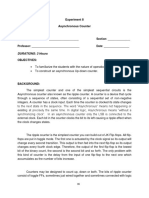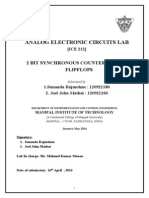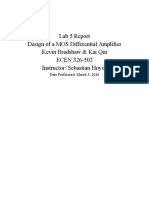0% found this document useful (0 votes)
21 views17 pagesDOC-Lab 7
The lab report details the design and implementation of asynchronous and synchronous counters using J-K flip-flops as part of a digital logic experiment at AIUB. It compares the two counter types, highlighting their functioning, circuit diagrams, and simulation results, confirming the accuracy of the designs through practical and theoretical evaluations. The experiment successfully achieved its objectives, providing insights into the applications and performance of different counter types.
Uploaded by
Md FardinCopyright
© © All Rights Reserved
We take content rights seriously. If you suspect this is your content, claim it here.
Available Formats
Download as PDF, TXT or read online on Scribd
0% found this document useful (0 votes)
21 views17 pagesDOC-Lab 7
The lab report details the design and implementation of asynchronous and synchronous counters using J-K flip-flops as part of a digital logic experiment at AIUB. It compares the two counter types, highlighting their functioning, circuit diagrams, and simulation results, confirming the accuracy of the designs through practical and theoretical evaluations. The experiment successfully achieved its objectives, providing insights into the applications and performance of different counter types.
Uploaded by
Md FardinCopyright
© © All Rights Reserved
We take content rights seriously. If you suspect this is your content, claim it here.
Available Formats
Download as PDF, TXT or read online on Scribd
/ 17
























































































